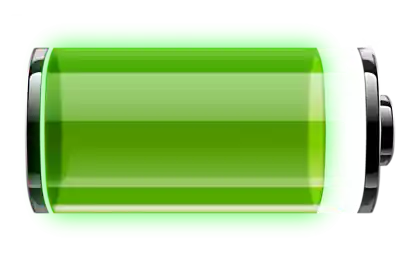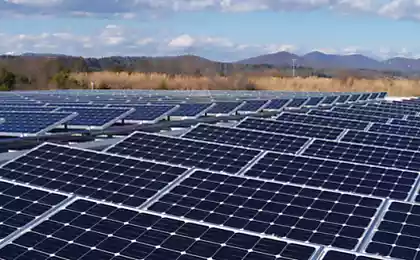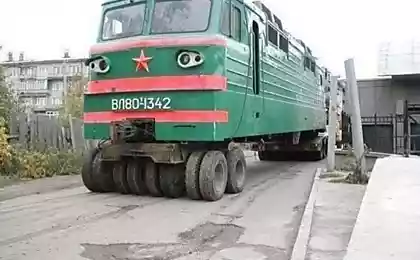448
Created a "breathing" battery that converts sunlight into electricity

As part of any solar energy systems must include photovoltaic cells that absorb sunlight and produce electric energy that is supplied to consumers. Another required component of such plants are rechargeable battery, accumulating the excess generated electricity and gave it during peak consumption. Unfortunately, the process of storing and retrieving energy from batteries fairly ineffective, the consumers are served no more than 80 percent of the amount of energy generated by solar panels.
A way out of this situation may be the Union of solar and batteries in one device, in which energy of sunlight is converted directly into chemical energy of electrolyte ions. And researchers from Ohio University have developed a similar structure to that of the battery with high efficiency and converts into chemical energy 100 percent of the captured solar energy.
In the structure of the solar-rechargeable battery developed by a team led by Professor of chemistry Ying Wu (Yiying Wu), is a mesh woven from titanium nanorobotics covered with particles of titanium dioxide, with dimensions of a few nanometers. In this case, the grid size is only 200 nanometers.
When the solar cell absorbs light, the photons break molecules of lithium peroxide (Li2O2) in the electrolyte, lithium ions and oxygen. The oxygen escapes into the air and lithium ions, having an electrical charge stored inside the battery. When the battery starts to give up the accumulated electric charge, it absorbs oxygen from the environment and its electrolyte is again formed peroxide lithium.
"We had a breathing battery," says Professor Wu, "She takes a breath, when she gives the stored in it energy, and exhale when it's charging in sunlight".
Conducted in the laboratories tests showed that the "vitals" of a battery, more specifically, the number of cycles of charge-discharge, that it can withstand without loss of performance, is almost identical with the same performance of conventional lithium-ion batteries. And it can already count on the fact that such a solar-battery may soon appear on the market, reducing total cost of technology production and accumulation of solar energy by at least 25 percent.
Source: www.dailytechinfo.org






















